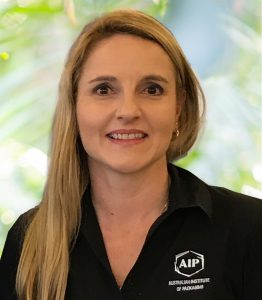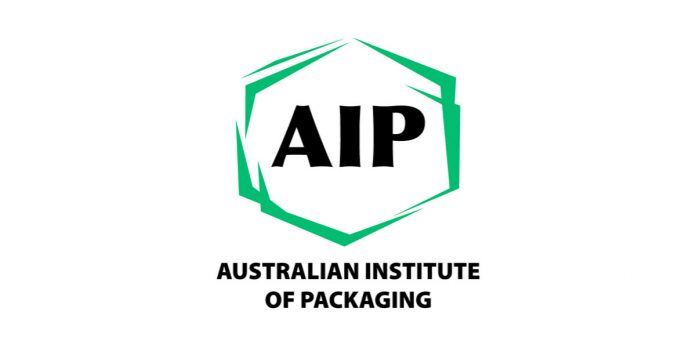
From a packaging and food waste perspective, adjustment of date labelling communication systems have been identified as the most efficient measure to reduce food waste, which has the greatest economic value per ton in terms of consumer food waste reduction and the lowest costs regarding the business practices (ReFED, 2016).
By Australian Institute of Packaging Executive Director Nerida Kelton.
Minimising Food Waste wherever possible is everyone’s responsibility with all of us being able to make effective changes. So, let’s start with an easy exercise…
Next time you are in your refrigerator I invite you to find a product with a ‘use by date’ and one with a ‘best before date.’ Do you throw the food away when it is nearing the date or when it is past the date? What triggers you to automatically throw the food away? Is it judgement, common sense or simply because somewhere deep inside you believe that food will be unsafe to eat after that date?
Now ask yourself would your attitude to date labelling change if you understood the difference between the use by date and a best before date?
What is ‘date labelling’?
Date labelling is designed to guide consumers on how long food can be kept before the quality deteriorates, or once the item is unsafe to eat.
What are the meanings of a ‘use by date’ versus a ‘best before date’?
Use by dates and best before dates are the next step in date labelling and are the responsibility of the food manufacturer.
‘Use by date’
In the simplest of terms, a use by date is designed for the health and safety of a consumer and you should not eat the item after this date. Items are also not legally permitted to be sold after this date as they pose health risks.
‘Best before date’
A best before date, however, does not mean that you cannot eat the food after then; it simply means that the quality or taste may not be ‘at its best’ after the recommended date. This style of date-labelling is determined by the manufacturer’s recommendation of ‘optimum consumption’ to achieve the best quality product. According to Food Standards Australia New Zealand (FSANZ), who is responsible for all date labelling definitions, “Food items are legally permitted to be sold after a best before date and until they are no longer fit for human consumption.
“Legally the only food item that can have different date marking is bread which can be labelled with a baked on, or baked for date, if its shelf life is less than seven days.
“Foods that have a shelf life of two years or longer eg, some canned foods, do not need to be labelled with a best before date. This is because it is difficult to provide a consumer with an accurate guide as to how long these foods will keep; as they may retain their quality for many years and are likely to be consumed well before they spoil.”
So, next time you see a date label on your food have a look and see whether it is a use by date or a best before date and then make informed decisions when discarding the items. We encourage you to educate everyone within your tribe about the differences and help make a contribution to minimising food waste.
As an industry we need to openly and collectively discuss how to improve consumer-based date labelling marketing campaigns and how to design packaging with better on-pack communications so that people make informed and conscious decisions before wasting food unnecessarily. Everyone has a role to play to help drive change that effectively minimises and/or prevents food waste.
AIP to lead the Save Food Packaging Project for the Fight Food Waste CRC
The Australian Institute of Packaging (AIP) formally announced that the Fight Food Waste Cooperative Research Centre have approved their Save Food Packaging project as one of the first.
The AIP is the project leader on the Save Food Packaging Criteria and Framework 1.2.1 project and has established an extensive Save Food Packaging Consortium that is made up of leaders in Save Food Packaging Design and innovations to ensure that the guidelines are practical for the industries they will serve. The Save Food Packaging Consortium is made up of: the AIP as project lead; RMIT as the research partner; project contributors including ZipForm Packaging, Sealed Air, Multivac and APCO; project partners including Plantic Technologies, Result Group and Ulma Packaging; and the extension network including AFCC, AFGC and AIFST.
The Save Food Packaging Design Criteria and Framework will integrate current research literature with industry knowledge regarding the functional properties and role of packaging in saving food being wasted. Whilst the primary functions of packaging are to contain and protect the content, as well as providing information about the product, the role of packaging in reducing food waste needs to be better understood by food producers, manufacturers, brand owners, retailers and consumers.
The connection between packaging design and food waste needs to be discussed more openly in the industry. From field to fork there are several possibilities for food loss and waste to occur. It has been approximated that up to 30% of the edible food produced, does not reach the fork. Packaging’s role in reducing food waste is the next challenge for packaging technologists, designers, and engineers.
Using the industry networks via the Australian Institute of Packaging (AIP), in partnership with the Consortium, this project will produce packaging design criteria and communication material for the implementation into food packaging that will lead to better packaging design, material selection and format selection using appropriate portioning, sealability, resealability features, date labelling, extend shelf life and provide the information required to assist retail, food service and consumers to minimise food waste. This project will focus initially on Australia/New Zealand. Future projects will look to other countries through the World Packaging Organisation (WPO). The global project will also be led and coordinated by the Australian Institute of Packaging (AIP) as the ANZ WPO Member.
The expected impacts of this project are:
- Packaging criteria for reducing food waste is known and applied in packaging design by food producers.
- The packaging criteria meets the needs of, and is used by, packaging and food technologists/designers/marketers/sustainability managers and is effectively communicated to the retailer, food service and consumers.
- Delivery of AIP-run education and training programs that will demonstrate how to use the criteria and integrate within product-packaging development processes.
- Food producers, manufacturers, retailers, and packaging companies are designing innovative Save Food Packaging and communicating this to customers and consumers.
- Recognition of companies designing innovative and intuitive Save Food Packaging through the annual Australasian Packaging Innovation & Design (PIDA) Awards and the international WorldStar Packaging Awards program run by the World Packaging Organisation (WPO). The AIP are the ANZ Board Member on the WPO.
- Showcasing best-practice award-winning Save Food Packaging Design innovations across ANZ on a regular basis.
- Revision, where required, of the criteria for the Australasian Packaging Innovation & Design (PIDA) Save Food Packaging Design Special Award.
- Contribute to consumer education pieces on Save Food Packaging and the role that packaging plays in minimising food waste within Australia and New Zealand.
Thinking on the box: design on-pack information attributes to influence consumers’ food waste behaviour
A study currently underway by the RMIT University, Australia, the Department of Management and Engineering, Linköping University, Sweden and the Service Research Centre, Karlstad University, Sweden identifies that on-pack date-related labelling is one of the most direct information carriers used by food industry to communicate product shelf-life attributes to consumers.
Through applying an activity theoretical lens to analyse the literature and empirical results, the researchers found that consumers’ interaction with date labels and storage information in their food consumption activity is highly influenced by their shifting motivations, the changing sociocultural contexts, and the dynamic interplay between the use of internal sensory perceptions and external on-pack date labels.
The study aims to systematically understand the interplay between on-pack date labels and consumer food waste behaviour and develop design implications and interventions to better support consumers in reducing food waste. Given the broad scope of the topic, this study specifically focuses on the consumer-food packaging interaction in household levels, the effects of date labelling and storage related packaging attributes in consumers’ purchasing behaviour are excluded in the study.
A design for sustainable behaviour perspective is taken as the main research perspective. Design for sustainable behavior is a relatively new field of inquiry aiming to reduce negative environmental and social impacts of products and services through influencing user behavior towards a more sustainable direction (Wever et al., 2008; Wever, 2012). Recent developments in this field attempt to understand the sustainability problems through both a synthetic and analytical approach, which can enable us to incorporate the factors such as the context of consumers’ food consumption, consumer behavior transition and evolution, and the emerging technological mediation into the on-pack date labelling and storage information evaluation and design process.
The Australian Institute of Packaging (AIP) will provide updated outcomes from this study as a part of its CRC project.
About Nerida Kelton MAIP
Nerida Kelton MAIP is the Executive Director for the Australian Institute of Packaging and the ANZ board member for the World Packaging Organisation. She is also a member of the International Packaging Press Organisation.
She has worked in the packaging industry for more than 22 years, holds a position on the Department of Environment and Energy’s National Food Waste Strategy Steering Committee and is the AIP lead for the Save Food Packaging Consortium project within the Fight Food Waste Cooperative Research Centre. She is committed to helping the packaging industry understand the role that packaging plays in minimising food waste and to also support recognition of brands that are designing innovative save-food packaging. Nerida is also passionate about helping to educate and train packaging professionals in the importance of sustainable and circular packaging design and recognising best practice in this area.
About Australian Institute of Packaging
The Australian Institute of Packaging (AIP) is the peak professional body for packaging education and training in Australasia, helping to shape the careers of generations of packaging professionals. The AIP covers Australia, New Zealand, and parts of Asia.




